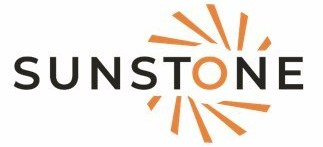General Lectures - April 2025 - First Edition
The SUNSTONE EU Project (SESAME’s Upgrading Network for Scientific user Training and Outreach into the Next Era), under the SESAME initiative, is structured as a series of lectures and dedicated trainings. The training is organized in three successive steps, providing a detailed and specific information on synchrotron radiation techniques and applications.
To ensure a strong theoretical foundation in synchrotron radiation, participants will begin with a mandatory series of General Online Lectures in April 2025. This foundational step is crucial for progression to subsequent phases and will cover research opportunities, available techniques, and their practical applications across various scientific fields.
The General Online Lectures will span four days, beginning with an introduction to synchrotron radiation and continuing with three days, each of them dedicated to a specific key research theme.
1. Introduction to Synchrotron Radiation (April 8th)
The first day of the SUNSTONE training program at SESAME will be dedicated to introducing the fundamental concepts necessary to fully exploit the potential of synchrotron radiation.
Participants will begin by gaining a solid understanding of the physical principles behind synchrotron radiation, exploring its diverse applications in various research fields. Common experimental techniques and the ways in which synchrotron radiation is used for materials analysis, structural biology, chemistry, and other scientific disciplines will be presented.
Subsequently, the focus will shift to the SESAME infrastructure, illustrating the unique research opportunities it offers to the regional and international scientific community. The available beamlines, their technical characteristics, and the potential for cutting-edge research will be presented.
Finally, the first day will conclude with a session dedicated to preparing persuasive research proposals for access to synchrotron light sources. Participants will receive practical advice on how to structure an effective proposal, highlight the scientific impact of their research, and meet the evaluation criteria of expert committees.
The goal of the first day is to provide participants with a solid foundation of theoretical and practical knowledge, preparing them to tackle the more advanced training sessions on experimental methods and data analysis that will follow in the subsequent days.
2. Archaeology and Cultural Heritage using X-ray Computed Tomography (April 16th)
The use of synchrotron light in Cultural Heritage studies offers non-invasive techniques to analyze and preserve historical artifacts and artworks. The X-ray Computed Tomography (XCT) methods available at the beamline ID10-BEATS enable researchers to scan in 3D the internal structure of an object, uncovering hidden layers, assessing material compositions, and thus supporting conservation efforts without damaging the objects. This thematic area will cover how microtomography and 3D imaging contribute to archaeology, providing new insights into ancient technologies, manufacturing techniques, and the state of preservation of cultural heritage items.
3. Environmental Science Using Soft X-Rays (April 21st)
Environmental science increasingly relies on advanced spectroscopic techniques to analyse complex material interactions and chemical compositions. The ID11-HESEB and TXPES beamlines at SESAME facilitates the study of environmental samples through methods such as X-ray absorption spectroscopy (XAS) and X-ray photoelectron spectroscopy (XPS). These techniques allow for precise analysis of chemical states, pollutant interactions, and material surfaces, which are critical for research in environmental remediation, pollution monitoring, and green technologies. This thematic session will delve into the mechanisms of soft X-ray interactions with materials, enabling researchers to explore catalytic processes, soil contamination, and the development of sustainable materials.
4. Science in Operando Conditions Using X-ray Absorption Spectroscopy (April 29th)
Science in operando conditions is crucial to investigate functional materials used in batteries, catalysts and industrial process. X-ray absorption spectroscopy (XAS) available at the BM08-XAS/XRF beamline is a valuable technique to study the electronic structure and local atomic environment of materials, providing insights into oxidation states, coordination geometry, and electronic transitions, occurring in these functional materials. XAS under operando conditions offers critical insights into how materials behave under working conditions, and thus improving their performance and durability. This thematic area will focus on in situ and operando XAS methodologies, showcasing how these approaches support the development of energy materials, functional coatings, and catalytic converters.
** For detailed time and lectures, please click on the timetable button
** Only registered participants will receive by email a Webex link to follow the online lectures.



